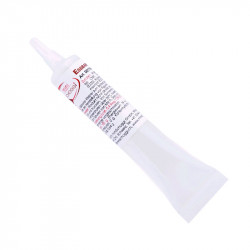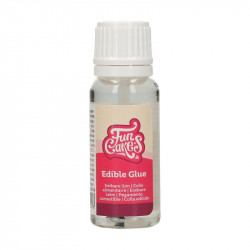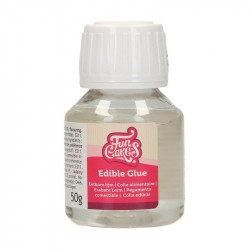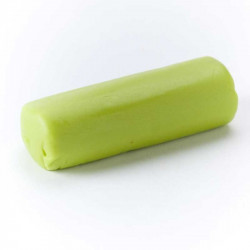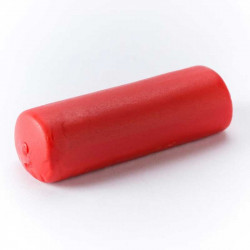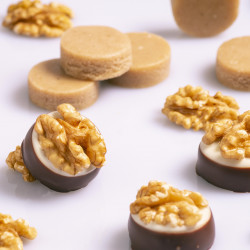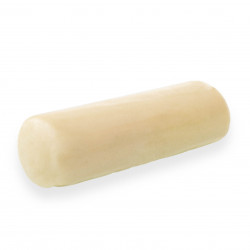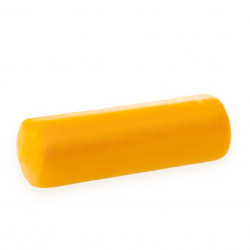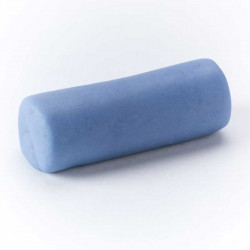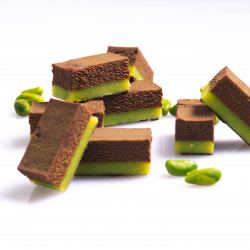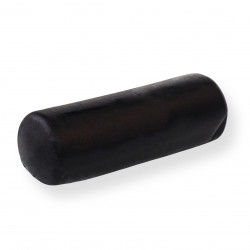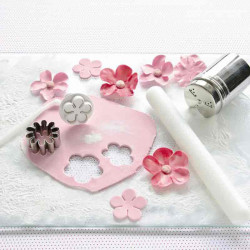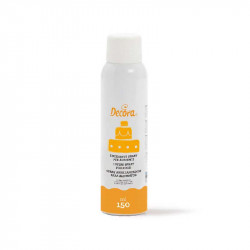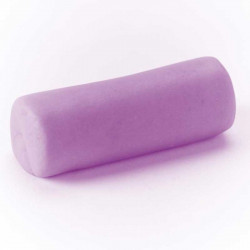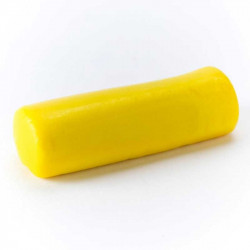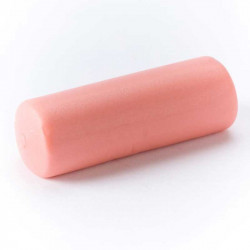Marzipan
Marzipan
Marzipan, you either love it or hate it. Hardly any other sweet meets with so much approval or disapproval. But what is actually in this treat and how is it made? In the following, we will take a closer look at this question.
The three essential ingredients are rose water, sugar and almonds. The history of this sweet goes back to the first millennium, there it appears in the historiography for the first time. Its ingredients came from the distant Orient, and over time it was spread throughout Europe by the Spaniards. At that time, this delicacy was reserved only for the nobility and kings. Fortunately, this has changed today and it can be either homemade or bought relatively cheaply in any supermarket. For a long time, marzipan was even considered a medicine and was taken to increase potency and promote digestion. Even this has been abandoned in modern times, it has become merely one of the most popular sweets in the world.
How to make marzipan yourself? It's even faster than you might think at first. All you need is powdered sugar, rose water, almonds and some time for preparation. The biggest advantage of making your own marzipan is the fact that you can prepare it entirely without preservatives or artificial flavors. Also, flavor enhancers should be completely disregarded when making your own. First, you need to boil the almonds, drain them and remove the skin. Then grind them very finely and add the rest of the ingredients in a bowl. Knead the mixture until it becomes smooth between your hands. Then form small bite-sized pieces and refine as desired. Cocoa powder, for example, is excellent as a decoration and for the taste. The next guests are guaranteed to make eyes when they are tasted with homemade marzipan. One must be aware, however, that due to the lack of a stone roller, the marzipan will be much coarser-grained than professionally made marzipan. Therefore, if it is for a noble creation, which otherwise does not have granular elements, we recommend to obtain the marzipan.
What is marzipan?
Marzipan, a traditional confectionery product, has enjoyed great popularity around the world for centuries. With its sweet and almond-like taste, marzipan is the perfect temptation for those with a sweet tooth and gourmet.
The history of marzipan goes back a long way and its origins are still disputed. Some claim it was invented in the Orient, while others prefer a Spanish origin. Regardless of where it originated, one thing is certain - marzipan is definitely an international phenomenon today and is known in many different cultures.
Marzipan is made from ground almonds, sugar and sometimes additional flavors such as rose water or orange blossom water. It is incredibly versatile and can be used to make a variety of treats, from marzipan potatoes to marzipan figurines.
In addition to its delicious taste, marzipan also has several health benefits. Almonds are an excellent source of healthy fats, fiber and protein. They also contain many important vitamins and minerals such as vitamin E, magnesium and calcium, which are essential for a balanced diet.
So let's dive into the fascinating world of marzipan and discover what it has to offer!
Why is it called marzipan?
Marzipan, this sweet delicacy that enchants us with its delicate almond flavor, is widespread and popular all over the world. But have you ever wondered why it is called marzipan of all things? The answer lies in a fascinating story that began a long time ago. Once upon a time, marzipan was called "mataban", which means "king of food". Its flavor and texture have always been regal and special, which is why the term fits perfectly. This delicious dessert has won over many connoisseurs over the centuries and continues to conquer our hearts today. Dive into the mysterious world of marzipan and experience its royal taste firsthand.
Can you eat marzipan like this?
Can you eat marzipan like this? Yes, you can eat marzipan like this! Marzipan is a delicious sweet that can be enjoyed plain or in a variety of dishes. It is made of ground almonds and sugar and has a deliciously sweet and almondy taste. Whether as a small snack between meals or as an ingredient in cakes and pastries, marzipan is versatile and always a delight. It is also ideal for shaping and decorating figures and cakes. So, why not let a piece of marzipan melt in your mouth and indulge in its intense flavor? Try it and let yourself be surprised by the sweet seduction of marzipan!
Can you freeze marzipan?
Can you freeze marzipan? Yes, you can freeze marzipan. Marzipan is a sweet paste made from almonds and sugar that is often used to decorate cakes or as an ingredient in desserts. If you have leftover marzipan or want to stock up on it, you can simply freeze it to make it last longer. Before freezing, you should cut the marzipan into small pieces or a desired shape and pack it in airtight containers or foil bags to prevent air and moisture from entering. When thawed, the marzipan will retain its texture and flavor. Freezing is a convenient way to keep marzipan fresh and ready for use. Give it a try!
What's all in marzipan?
What's in marzipan? Marzipan is a sweet mass of ground almonds and sugar. Traditionally, the ingredient list for marzipan consists of two main ingredients: Almonds and sugar. To make a fine marzipan, you need a large amount of almonds, which are first peeled and then finely ground. The sugar is then added and mixed well. In some variations, marzipan may also contain other vegetable fat, such as coconut oil. This serves to improve the consistency of the marzipan and make it last longer. Marzipan is a popular ingredient in many desserts and sweets and is often coated with chocolate or used for cakes and pastries.
What food coloring is suitable for coloring the marzipan?
Which food coloring is suitable for coloring the marzipan? Food coloring that is water-based is suitable for coloring the marzipan. This type of color is ideal because it gives the marzipan a vivid and uniform color. It is important to choose a high quality food coloring to ensure that it does not cause any undesirable taste or odor changes. There are several shades to choose from, depending on personal preferences and requirements. Popular colors include red, green, blue or yellow. Before coloring the marzipan, a small amount should be tested to ensure that the desired color is achieved. With the appropriate food coloring, the marzipan will not only be delicious, but also visually appealing.
Can nut allergy sufferers eat marzipan?
Yes, nut allergy sufferers can usually eat marzipan, as marzipan consists mainly of almonds and sugar. Nuts such as hazelnuts or walnuts are not usually used to make marzipan. However, it is important that nut allergy sufferers always check the ingredient list as some marzipan manufacturers may have traces of other nuts in their products. There is also specially made allergen-free marzipan on the market that is suitable for nut allergy sufferers. However, if in doubt, nut allergy sufferers should always consult an allergist or doctor before eating marzipan to ensure that no allergic reaction occurs.
Which marzipan is good for modeling?
Generally, marzipan with a higher almond content is better suited for modeling. The higher almond content makes the marzipan firmer and it retains its shape better. A marzipan with an almond content of at least 50% is recommended. It is important that the marzipan is soft enough to be easily kneaded and shaped. A marzipan that is too hard will cause it to break quickly or be difficult to work with. Therefore, before modeling, the marzipan should be kneaded briefly to make it more pliable. In general, it is advisable to try different types of marzipan to find the ideal one for modeling purposes.
How do I process the marzipan to create a beautiful cake coating?
To make a beautiful marzipan cake icing, follow these steps:
1. Prepare the marzipan: First knead the marzipan well to make it soft and pliable.
2. Prepare surface: Lightly sprinkle the work surface with powdered sugar or starch to prevent the marzipan from sticking.
3. Roll out: Using a rolling pin, roll out the marzipan on the prepared work surface. Make sure it is evenly thick and large enough to cover the entire cake.
4. Prepare cake: Place the prepared cake on a cake plate or cake stand.
5. Place marzipan coating: Carefully lift the rolled out marzipan and place it over the cake. Press it lightly against the sides to create a smooth surface.
6. Fitting: Cut away the excess marzipan on the sides of the cake and fit it to the desired shape.
7. Decorating: You can color the marzipan with food coloring or decorate it with other decorations such as fondant flowers or chocolate sprinkles.
8. Smoothing: Use a smoothing trowel or your hands to carefully smooth the marzipan around the cake and neatly define the edges.
9. Allowing to dry: Let the marzipan cake frosting dry for a few hours or overnight before adding more decorations or serving the cake.
10. Storage: Store the marzipan-covered cake in an airtight container or in plastic wrap in the refrigerator.
Note that marzipan is sensitive to moisture. Therefore, avoid frosting a wet cake and store the cake in a cool room or refrigerator to prevent the marzipan from drying out.

